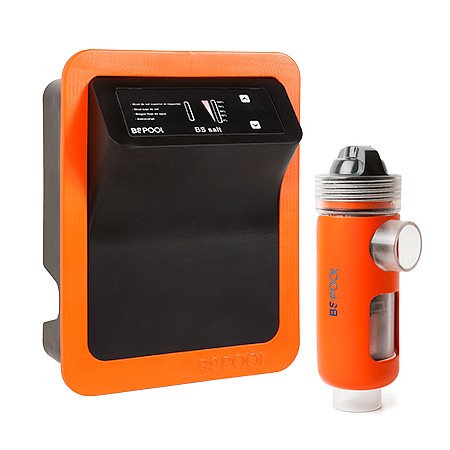Salt chlorination
VolverWhat is salt chlorination?
The treatment with saline chlorination, is a process of electrolysis (decomposition of a substance by electric current) that converts common salt (sodium chloride) previously added to water, into an active disinfectant (sodium hypochlorite).
The process generates chlorine due to the presence of salt in the water and acts as a very powerful disinfectant, very effective to disinfect the water.
The water by this process tends to increase its pH balance, so it’s advisable to install a pH dosing pump which controls and injects pH reducer product to the water.
Advantages
- Easy installation: you do not need to change the filtration equipment; it can be installed in practically in any previous installation. You just have to modify some pipes to accommodate the new chlorination equipment.
- Avoid itching and irritation of eyes and skin.
- Minimum maintenance.
- There is no need to manipulate and store so many chemical products.
How do I maintain a salt chlorinated pool?
- Check the salt level with a specific tester, add salt as needed. The ideal dose is about 5 kg of salt per m3 of water.
- If, during the winter the water temperature drops to 15 ° C can turn off the chlorinator, because with so cold water doesn’t need to work.
- If it’s necessary at some point in time can quickly add chlorine fast acting to the pool water.
- Calibrate pH electrode probes and / or redox. Always at start to the season and regularly depending on use.
- Clean the electrode or cell chlorinator. To prevent lime scale is important to clean it once a year or more if the water used is very high in concentration of lime.
- After a few years, depending on how many hours you worked the chlorinator, the cell must be replaced. As pH electrodes, which are a consumable that lose their functionality over time.
Did You Know?
A drop of water from a salt chlorinated pool contains less salt than a human tear.
- Sea water: 37g/l
- Human tears: 9g/l
- Salt pools: between 3 and 5 g/l


